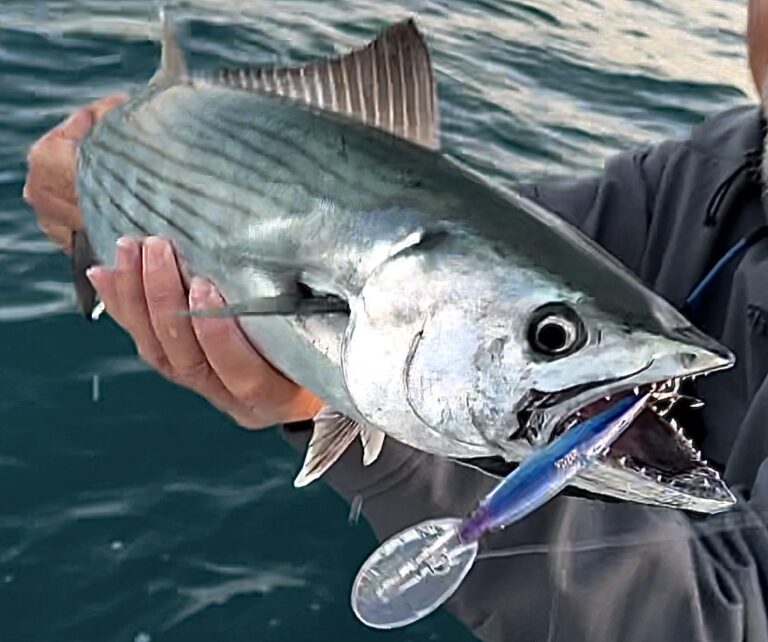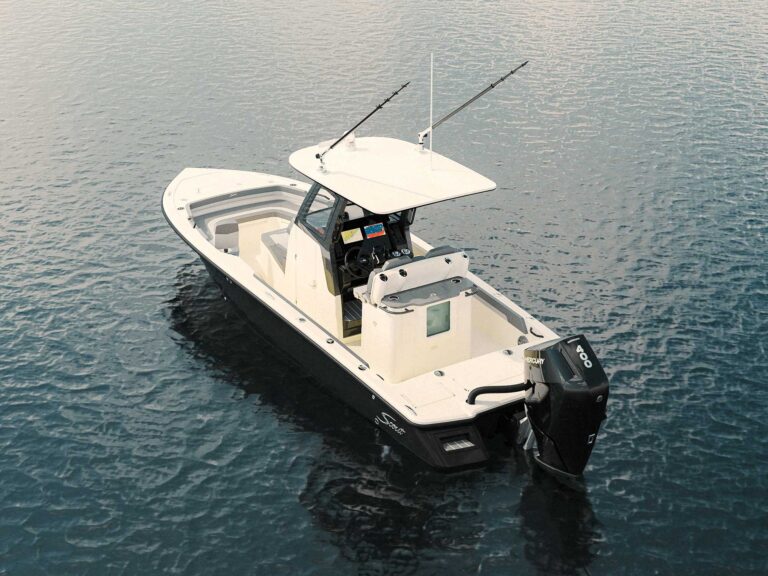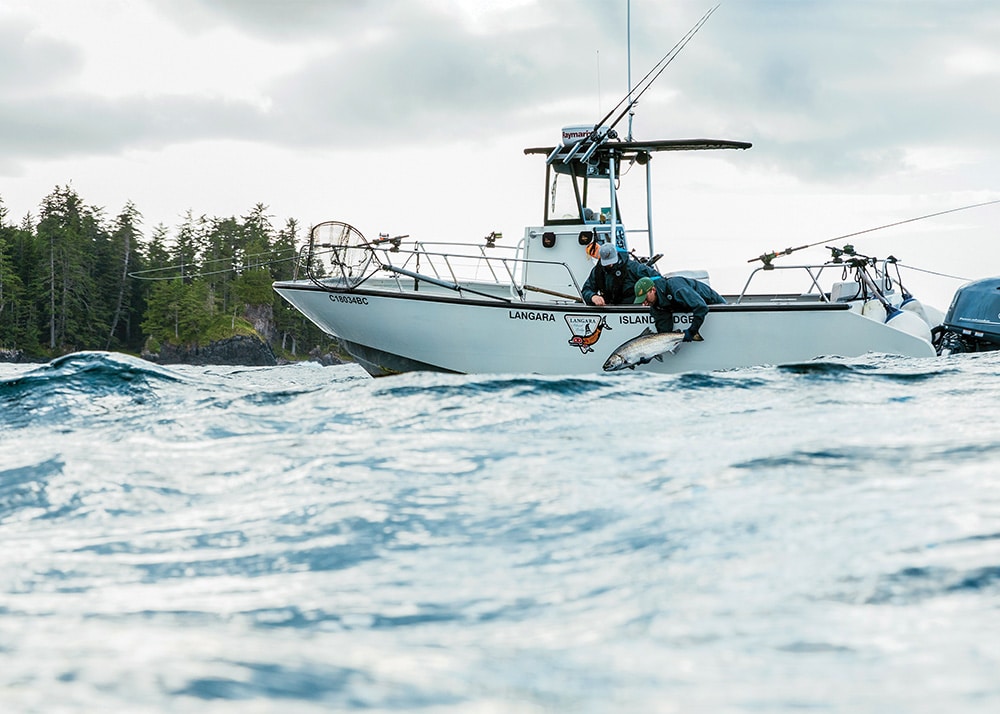
You’ve fished your home waters often, and now you are ready for the adventure that your fishing soul says you deserve: a destination remote and wild, spectacularly rugged and fish-rich, where you challenge big fish on light tackle in small boats. I’ve found such a place in Haida Gwaii, a cluster of islands 40 miles off the coast of British Columbia, Canada.
Haida Gwaii comprises 100 offshore wilderness islands on the edge of the continental shelf, square in the path of migrating Pacific salmon feeding on baitfish that also attract slab halibut, nasty lingcod and prolific rockfish. The runs of migrating salmon that encounter this offshore oasis pause to feast on a windfall of food. Salmon are here from May until the first storms of fall in late September arriving in roller-coaster order, one leaving, another nosing in. Still hundreds of miles from spawning, these salmon are hungry and strong.
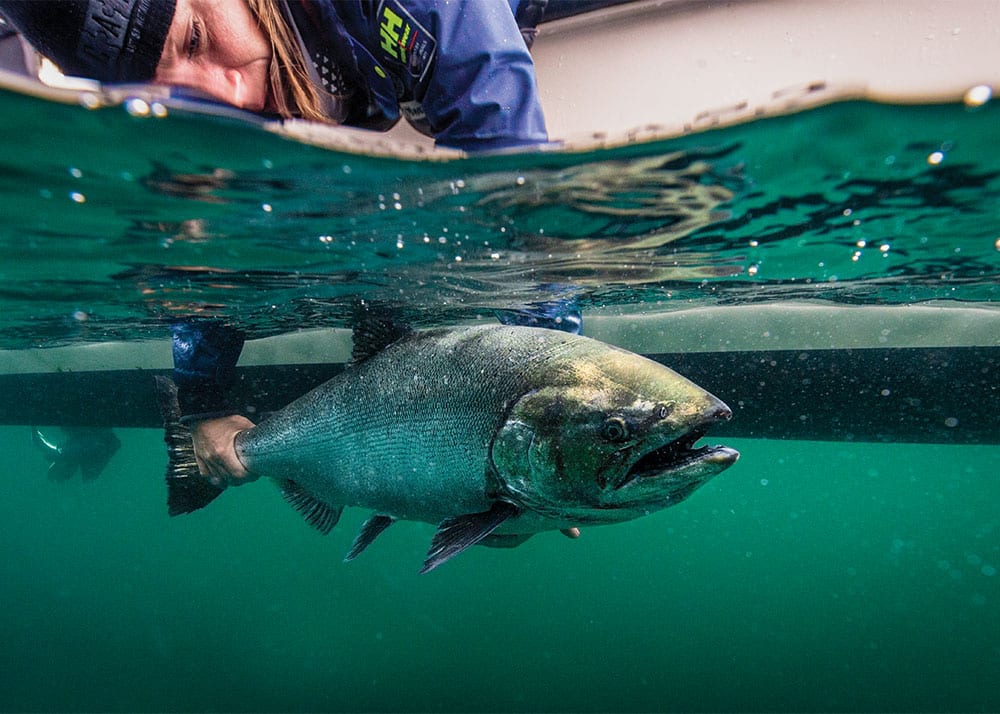
Wild Abundance
This is more than a fishing destination; it’s an isolated oasis of calendar scenery, cathedrals of cedars and hemlocks, where bald eagles are more common than crows. You fish with whales and spot Sitka blacktails, bears and sea lions in an atmosphere of First Nation culture. And it’s a saltwater adventure where you smile and run a hand along the cold flanks of chrome-bright chinook and coho salmon before coming home with buttery fillets, where you build memories with light tackle and schools of 2- to 6-pound rockfish and shockingly orange yellow-eyes that weigh in the double digits. Remarkable fish days unwind with lingering evenings at a lodge indulgent with good wines, perhaps a deserved cigar, and a table set with five-star entrées: quail, lamb, crab, prawns and steaks.
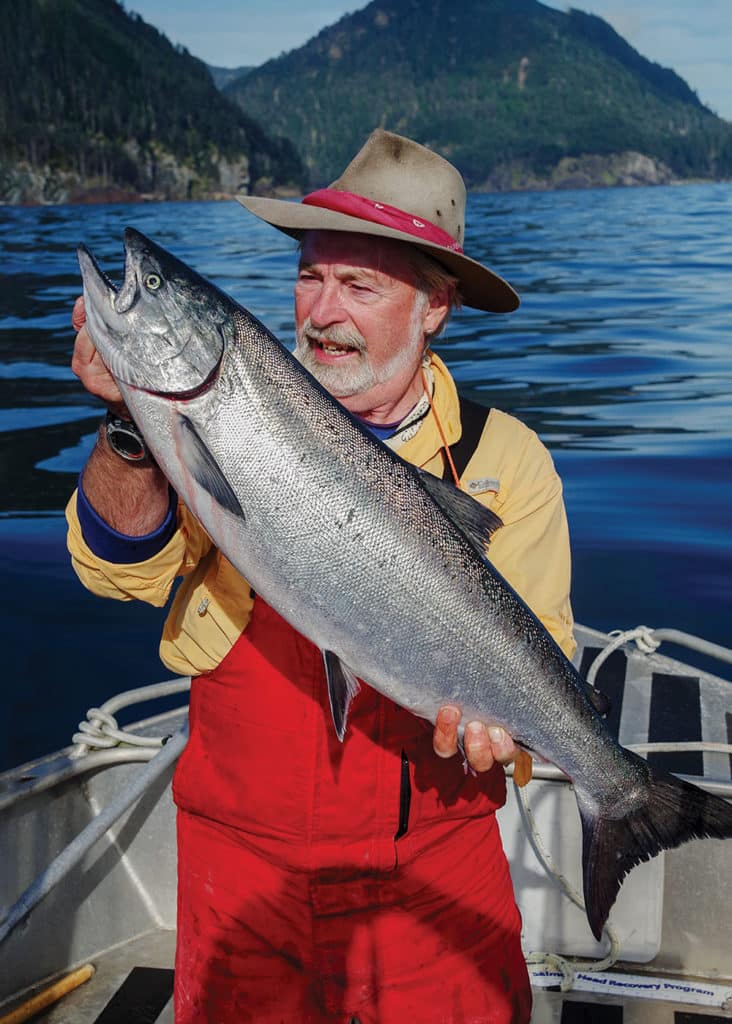
Whipped
Fishing partner Jim Goerg and I were trolling the west side of the archipelago, mooching the edge of an eddy that folds into the beach at Hippa Island, using soft 10-foot Canadian-style mooching rods and single-action reels, 4-ounce sliding weights, and herring, decapitated on a bevel to spin on 4/0 hooks with 3/0 stingers.
We worked along a massive kelp bed, shifting in and out of gear, moving baits up and down in the water column, looking for one last king to join the 27-, 28- and 30-pounders already in the box. Goerg’s rod tip plunged into the water as line flew off the spool. The king dived, ground its nose on the bottom, then launched a straightaway sprint.
“Our 40 or 50?” I asked. “Maybe?”
Seventy-five feet out, the king hit the surface, showing us its broad tail, purple back and snowy belly. It tried to jump, wallowed, then took off just under the surface, pushing a wake despite the tight monofilament.
Running hard, it was 150 yards out when the monofilament popped.
“I’m calling it a 50,” I muttered. Goerg was too stunned to argue.
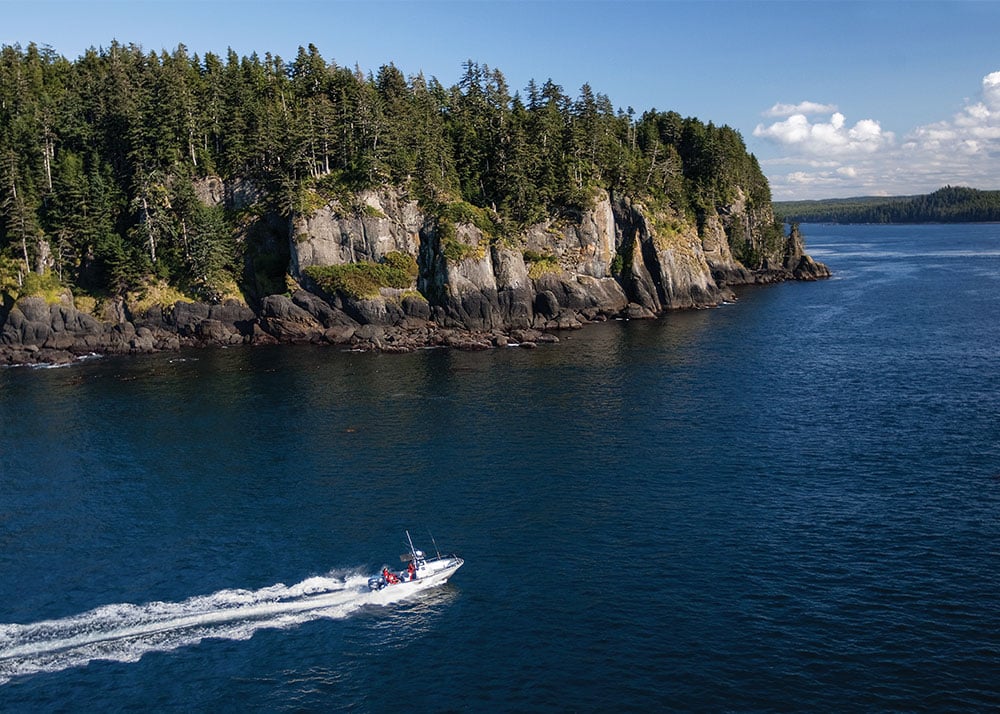
Elbow Room
Anglers in 17- to 25-foot boats pry Haida Gwaii’s prime fishing grounds on the north end and west side of the archipelago from seasonally open lodges. Private boats are rare, but day charters on the east side are available from the First Nations communities of Sandspit, Masset and Queen Charlotte City.
The heart of the destination fisheries, however, is the north end where a half-dozen lodges, accessed by floatplanes and helicopters, operate at Langara Island and Naden Harbor. The lodges share the local salmon hotspots, but solitude is just a short boat run away. Two more lodges, even more remote, float in sheltered coves 30 miles apart on the west side. In both areas you literally eat and sleep on top of the fish.
On a flat-water July afternoon, when the salmon bite faded at Langara, I struck out to explore. What I found, without another angler in sight, was a cove with a frenzy of feeding lingcod and rockfish. On a light 5½-foot rod, catching and releasing was as easy as casting ½-ounce jigs and plastic worms. On the run back to Cohoe Point, I stopped for 15 minutes and found two keeper halibut in 60 feet of water, one a 57-pounder. Some days, rare ones admittedly, are just too perfect. Yet if it’s going to happen, it will happen here.
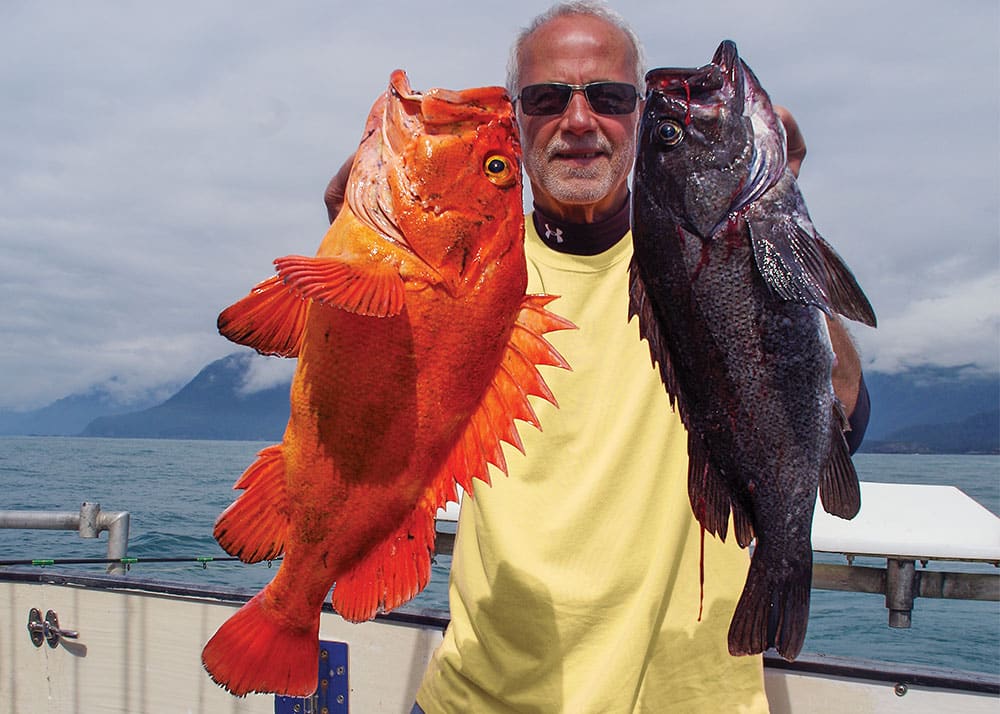
Pack Light
The first chinook arrive at Haida Gwaii in May; the bite peaks in June and continues into early September. In July, coho show up in big numbers, and in August, halibut peak. Fifty-pound outbound fish boxes are usually packed with a mix of fillets from coho, chinook, halibut, lings and rockfish.
Lodges provide quality saltwater tackle, but I also like to bring in a four-piece, 8-weight fly rod and a three-piece medium-action trout rod. On salmon breaks, I go looking for out-of-the-way kelp beds and rock ledges for ling and rockfish, or current rip lines with surface-feeding coho.
Lodge packages run $3,000 to $7,000 for five days, including chartered flights from Vancouver International Airport along the glaciated ice fields of the Coast Mountains, across Hecate Strait to Sandspit or Masset, and transfers into chartered helicopters for a kiss-the-trees flight over island mountains and ragged surf lines to pinpoint landings on lodges and barges.
Typical packages include seaworthy 17- to 25-foot boats and everything a traveling angler needs, including boots, rain gear, and three meals a day, plus snacks and drinks. Boats carry a full complement of tackle, two-way radios, fish finders, GPS and safety equipment. “Bring your toothbrush, we have the rest” is the common promo refrain.
Most lodges offer guided, partially guided and self-guided packages that include rigging instructions, fish handling (including harpooning that once-in-forever halibut), and use of the electronics.
Roaming fish masters watch over self-guided anglers, keep tabs on where the bite is erupting, and stand by with replacement tackle. The last time you touch a fish is when you hold it up for a photo. Lodges fillet, vacuum-pack, flash-freeze and box the catch to airline specifications.
It takes at least three flights to get here, and the closer you get, the smaller the aircraft become until finally you strap into a Sikorsky S-76A chopper.
When the rotors wobble, take a deep breath, put your nose against the Plexiglas bubble, and watch emerald mountains sliding past blue fjords and jagged rocks outlined in white wave froth below the pontoons as you shudder toward an upscale floating lodge somewhere in the wild coastal cliffs ahead, where the staff is paid to spoil you, and the fishing can be so good that you don’t dare brag about it.
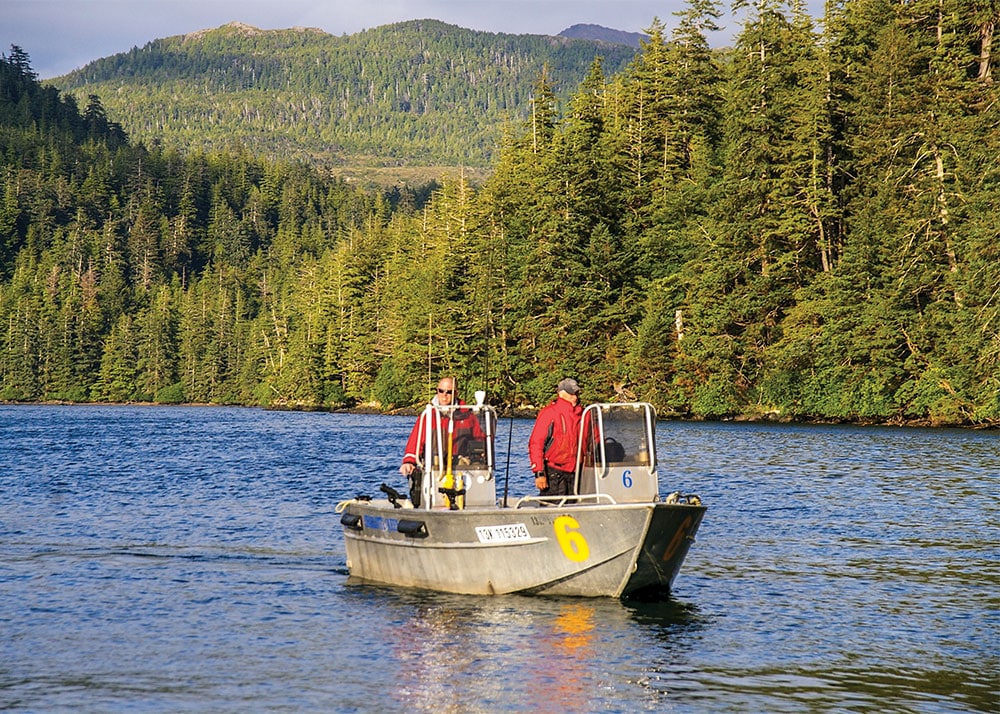
SWS Planner
Haida Gwaii Salmon, Halibut Lingcod and Rockfish
What: Chinook (king salmon), coho (silver salmon), halibut, lingcod and rockfish
When: May through September
Where: Haida Gwaii, British Columbia
Who: A comprehensive listing of charter boats, guides, and Haida Gwaii and Langara fishing lodges is available on the Web by searching “Haida Gwaii fishing lodges.”
The Lodge at Englefield Bay
westcoastresorts.com
Peregrine Lodge
peregrinelodge.com
Langara Fishing Adventures
langara.com
Naden Lodge
nadenlodge.bc.ca
Haida Gwaii Fishing Charters
haidagwaiifishingcharters.com





